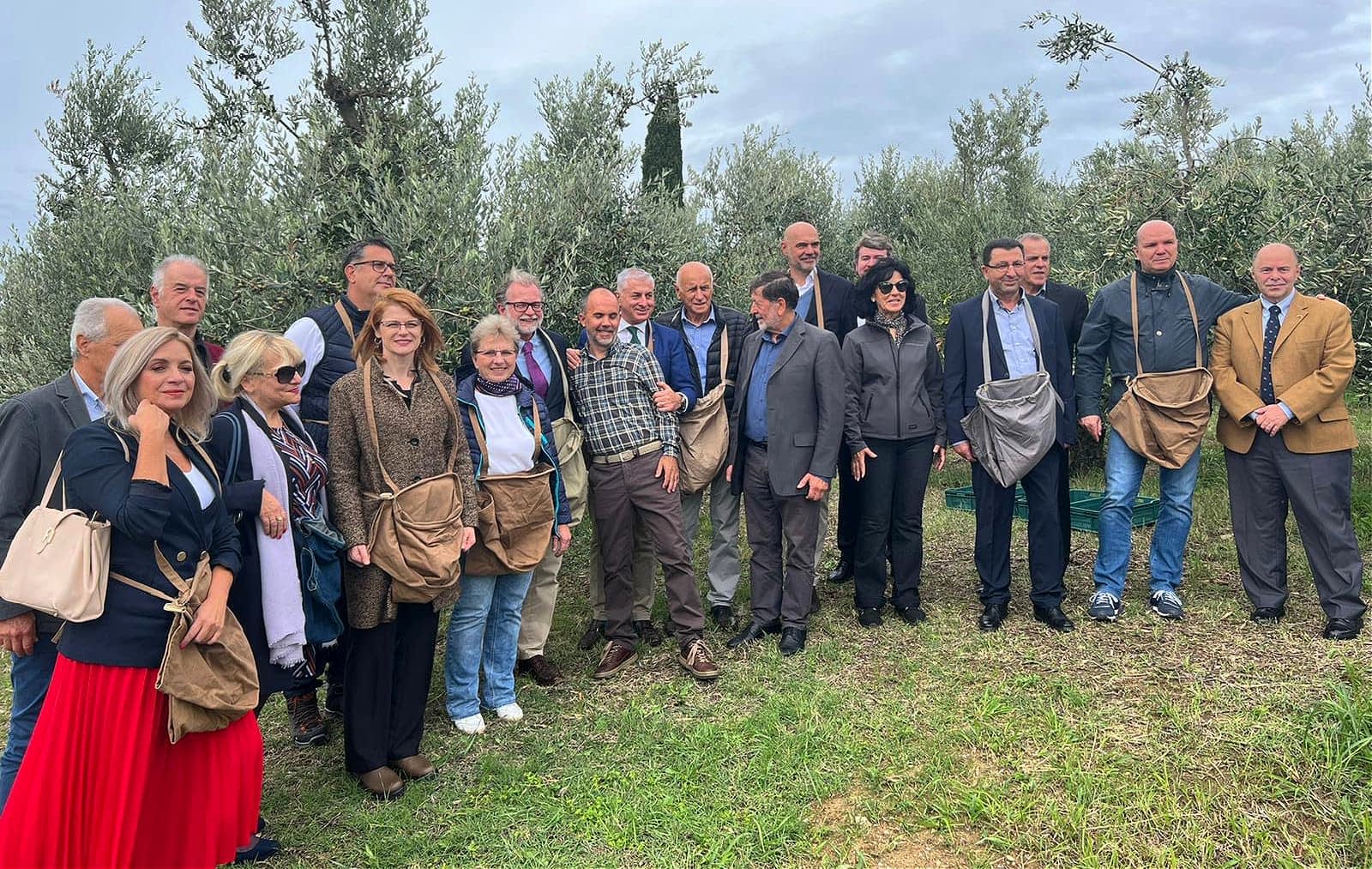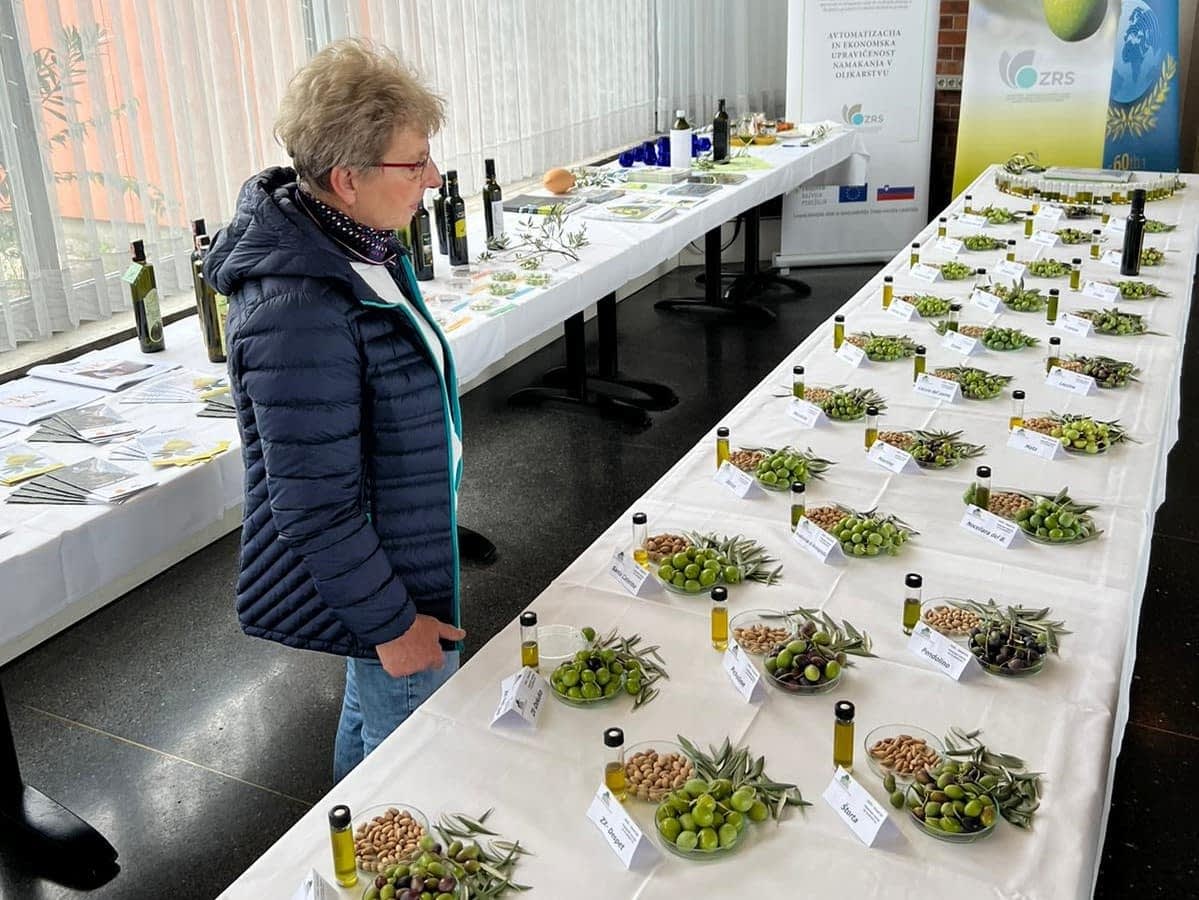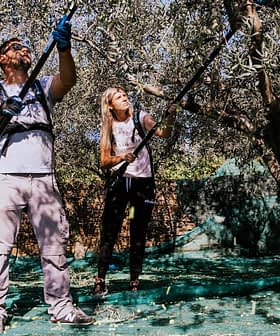Slovenian olive growers produced this year’s first oil even before the official start of the olive harvest on September 30 with Župan’s Olive’s Olive of Trust event.
The first oil was produced on September 18 at the Babić oil mill in Babić near Koper, the largest town in Slovenian Istria, where 90 percent of Slovenia’s olives are grown on about 2,000 hectares.
Olive grower Daniel Stojkovič Kukulin did not hide his satisfaction with the quality of his first oils of the season.
See Also:2022 Harvest Updates“There are as many as 1,340 milligrams of polyphenols in a liter. A real elixir,” Stojkovič said. He was the first in Slovenia to begin harvesting.
Other Slovenian olive growers also showed interest in an earlier harvest. Among them are Vanja Dujc, Franc Morgan and Boris Jenko, some of the country’s most successful producers.

Sandi Babič — the first oil was released on September 18 (Photo by Sašo Dravinac)
Many announced that they would start picking olives next week. They are satisfied with the quality of the fruits, and the harvest is better than expected, considering the prolonged summer drought, above-average temperatures and mysterious fruit drop in July.
Along with quality, officials from the Institute of Olive Growing in Koper confirmed that the quality of the first oils they analyzed is also very high.
So far, the oils have a very high polyphenol content. This means they are bitter and spicy oils, rich in antioxidants and likely to maintain their quality for longer. Previously, researchers have shown that polyphenol counts in olive oils are higher after dry summers.
In addition, drought and high temperatures did not favor the development of diseases, such as peacock eye, or pests, such as the olive fruit fly.
The bacterial blight of olive trees, which has caused enormous damage in recent years in neighboring Italy, was not noticed either.
“The share of damaged fruits due to olive fly attacks is significantly lower than in 2021,” said Milena Bučar Miklavčić, head of the aforementioned laboratory.
She compared this year’s olive growing season with 2003, which was also dry but yielded a record-high amount of olives. The yields in the main olive-growing areas are very high. The oils are spicy, bitter and fruity.
“We can enjoy aromas reminiscent of almonds, radicchio, artichokes, green tomatoes, olive leaves and various types of fruit,” said Bučar Miklavčić.
Minister of Agriculture Irena Šinko also expressed satisfaction with this year’s harvest. Participating in a traditional event organized by the municipality of Izola and the Association of Olive Growers of Slovenian Istria, she wished growers a successful season and emphasized the importance of olive growing in Slovenia.

Before the start of the harvest in Izola
She added that olive growing is a promising branch of the economy, evidenced by the increasing number of olive growers and groves in the past several years. She also touched on the drought that caused considerable damage this summer.
“Like last year, the Administration of the Republic of Slovenia for Protection and Rescue also granted state aid to farms that suffered damage to crops due to the 2022 drought,” she said. “Olive growers will also have the right to this assistance. The damage reports were completed this month.”
Šinko also presented olive growers Slovenia’s national strategic plan to implement the latest iteration of the Common Agricultural Policy, which comes into force in January 2023 and runs through 2027.

Minister Irena Šinko surveyed the products of Slovenian olive growers
Slovenia’s national strategic plan includes investments in production and marketing and promoting cooperative farming measures. The CAP also focuses on mitigating the impacts of climate change and introduced agro-climate payments for farmers affected by extreme weather events.
Šinko added that this year there were changes in the use of olive pomace as fertilizer:
“This means that under certain conditions, olive growers will be able to use olive pomace as fertilizer on agricultural land,” she said. “Oil mills will have to ensure proper storage of olive pomace.”
Overall, olives grow on 2,500 hectares in Slovenia. The average annual harvest is about 1,940 tons of fruit, from which producers yield 900 tons of oil. However, this is too little to meet domestic demand, so the country imports more than 2,000 tons of olive oil annually.






